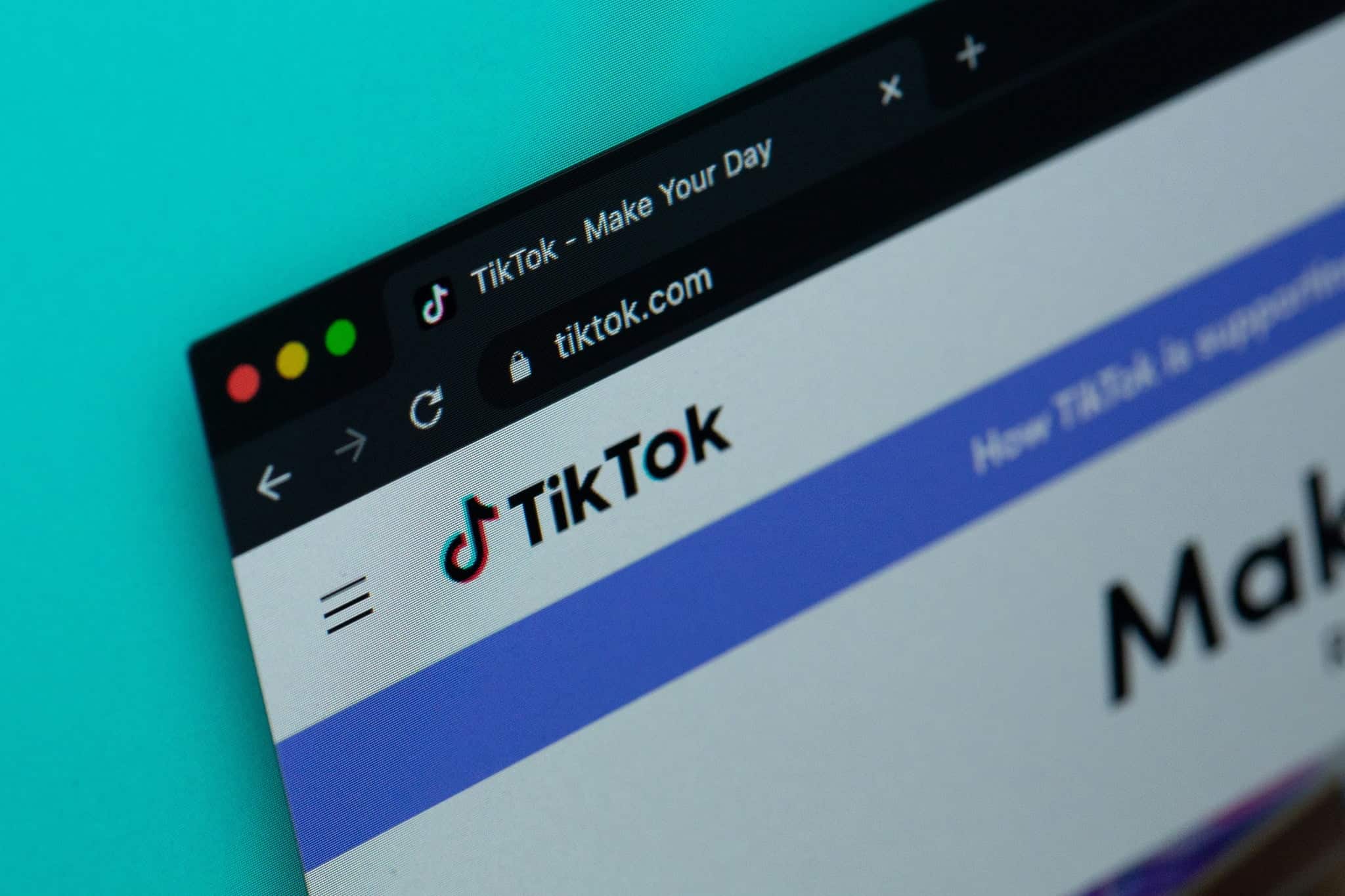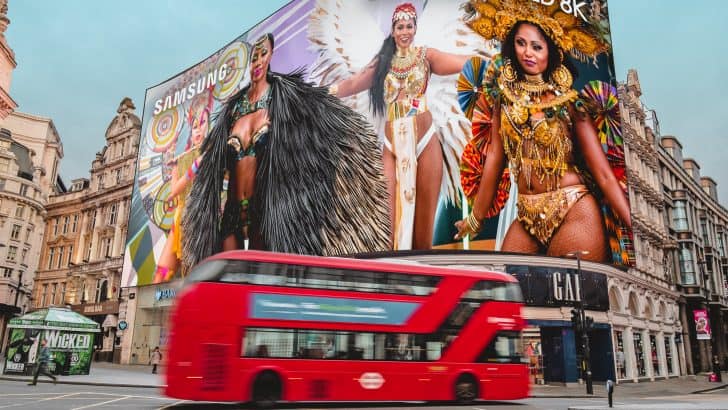In the Internet age, ad campaigns have the power to transcend borders and reach global consumers via their mobile devices.
Social media is a linchpin in reaching international audiences and leveraging your marketing. With an estimated six billion global users by 2028, social media is at the forefront of communication, with an ever-growing global reach that traditional advertising channels can only dream of.

Image sourced from statista.com
Social media is one of the most popular digital activities worldwide, but exploiting its power requires an adaptive approach and a customer-first mindset. This is where localization comes in.
With savvy marketing and a global approach, localization can help your company resonate with consumers worldwide, extending your brand reputation and competitive edge and opening new markets for revenue potential.
Read on to learn more about what social media localization is, why you need it, and our eight effective tips to harness the potential of localization in your social media content.
What Is Social Media Localization?
You’ve heard of demographic targeting, generational marketing, and other forms of audience segmentation. But what does social media localization mean? Put simply, it’s the process of adapting your social media outreach strategy to meet the needs or preferences of a specific region, country, or community.
A form of segmentation, localization divides your audience by locality and tailors your messaging to suit a niche international customer base. The process goes beyond mere language translation.
Your localization strategy should employ data analytics and conduct research into local trends and cultural nuances to understand your target demographic.
What catches their eye? What tone of voice appeals? What local events can you engage with? Answering these questions will increase interaction with your content.
Localization ensures that your message resonates with and connects with local communities, inspiring action.
Why Should You Localize Your Social Media Content?
In short, localization is likely to improve your global social media engagement levels and therefore establish your brand’s presence in international markets. Below, we outline three of the main benefits of localizing your social media content.
International business growth
Expanding into international markets has the power to diversify audiences and unlock new opportunities for brands. This can be in the form of growing market reach but can also unlock opportunities like international partnerships and exclusivity deals.
The unbeatable content strategies take advantage of localization via content syndication. This means partnering with local websites, social media influences, and others who are prominent in their fields to help build your brand and reach your target demos. All this helps to establish brand authority much more quickly.
Social media platforms like Instagram, TikTok, Facebook, X (formerly Twitter), and more have the power to connect with worldwide users in an instant. With the right content, they should all be essential channels for international business growth.
Here, you can position your brand as a competitor in its industry, showcasing content that appeals to local consumers and fostering trust.

Free to use image from Unsplash
Competitive edge
Brands that take the time to create social media localization strategies are likely to have a competitive edge over those that don’t.
For example, if you’re localizing your YouTube videos by including dubbing or subtitles, you’re making your content immediately understandable for global consumers and thus building your brand for streaming success.
You’ll be more likely than your competitors to create messages and branding that resonate with a diverse range of consumers.
This can also be lucrative in terms of negotiating with international distributors, streaming platforms, or broadcasters, who are all more likely to invest in content tailored to their audiences. You’ll gain access to a previously untapped customer base and establish new avenues for marketing.
Increased revenue potential
All this means increased revenue potential. The more people you reach, the more sales you’re likely to generate. Localization helps to establish connections with international consumers and therefore creates entirely new customer bases.
Interacting with audiences in their mother tongue will boost followers and increase traffic to your social media pages. It’ll also promote customer interactions and allow people to feel more confident contacting you.
With this in mind, a local customer service phone line is essential and can be created with a PBX telephone system; you don’t need a physical office to provide seamless support.
Furthermore, understanding local needs and wants allows you to create more targeted ad campaigns and promote products that are more likely to appeal to your target international audiences.
Customizing ads and tailoring your offerings creates more sales opportunities and therefore generates revenue.
8 Effective Tips for Localizing Your Social Media Content
Now that you understand the benefits of social media localization, how do you localize your content? Follow the below tips for the most effective localization strategy.
Choose the right platform
Before you embark on your localization strategy, you need to figure out which platforms are the most advantageous to target. You should research your selected region and understand which social media platforms perform the best in those areas.
For example, if you intend to expand your social media reach into China, you must understand and engage with platforms like WeChat, Weibo, and Douyin.
Conversely, in Europe, Facebook is still a competitive site. Facebook lead ads sync with most CRM tools and could be a valuable resource for companies looking to diversify their reach into European marketplaces.
Choosing the right platform is your first step to ensuring that your content reaches the right clientele. While there are platforms we’re all familiar with, individual regions can often have their own platforms that are directly competitive with the leading names. You must be aware of these and pursue them as advertising channels.

Free to use image from Pexels
Choose the right content
Your next aim should be to tailor your content to your locality. It’s important to note here that this doesn’t mean scrapping your existing content (especially if it’s working for your current demographics).
Instead, you should localize this content by adjusting it to suit your new consumer base. You can do this in various different ways.
Firstly, it’s essential you localize your language, terms, and the slang you use. This goes beyond language translation. Where possible, employ native speakers so that your messaging makes total sense in your target language.
Reach out to professionals who are familiar with the local slang and who can also incorporate local humor and tone of voice in your messaging.
It’s also crucial that you acknowledge cultural sensitivities and respect local traditions, values, and norms. This can be as simple as engaging with local holidays and avoiding those that aren’t celebrated or renaming products based on local preferences.
Do you remember Coca-Cola’s popular ‘Share a Coke’ campaign? This involved personalizing Coke bottles and cans with popular names. Building on consumers’ desire for personalization, it achieved global success by altering the names on offer depending on the region where the drinks were sold.

Image sourced from Cocacolaunited.com
Use audience segmentation and targeting
Most social media platforms offer targeted advertising features that’ll promote specific features or even send push notifications depending on a user’s geographic location. This means you can reach a smaller, more specific group of people with hyper-personalized messaging.
On Instagram, for example, you can use geotagging and even add localized hashtags to your posts to reach region-specific users and increase your brand visibility in new marketplaces.
Remember to consult locals for popular hashtags, slang, and spellings. There are many popular hashtags that brands fail to capitalize on because they aren’t written in the Latin alphabet.
Create engaging content
The best and most engaging social media content will consider the localization process right from the start. You should aim to produce content that can be amended to fit various demographics with ease or create custom posts intended for specific audiences.
Always keep your target consumers in mind and adapt your approach when necessary. For example, a fashion brand can’t promote the same clothes in December to both Australia and the US, given the former is in summer while the latter is in winter.
A good way to reach both demographics and tailor your content locally is to create region-specific social media accounts. For example, you’ll find different Instagram accounts for Ikea UK, Ikea Australia, and so on.
Content with localized imagery, subjects, and news events is also more likely to engage local audiences. People resonate with content that includes pictures and individuals they are familiar with.
Colors and landscapes can also be altered depending on local tastes—you might find a particular color palette resonates with one region over another.
Local events are another excellent way to localize your content and capitalize on existing social media buzz. You can do this by adding hashtags and creating subject-relevant posts. These will all promote your brand and increase your likelihood of creating viral marketing.
For instance, Samsung took advantage of the Notting Hill Carnival in London to promote its digital tech to a millennial audience.

Image sourced from news.samsung.com
Using translators and translation tools
Translation software, such as CAT Tools and Translation Memory tools, has come a long way in recent years and is an invaluable tool for social media localization.
Today’s rule based AI models and machine translation tools use sentence structure, grammar, and language rules to deliver automatic, accurate, and fluent translations. This means that short social media posts can be translated into numerous different languages with relative ease.
For more complicated messages or to add greater authenticity and meaning, you should consider working with local translators. Specialized translators will understand cultural nuances and how best to use jokes, idioms, and expressions.
Follow regional rules and regulations
Just like in the real world, when you enter a new digital sphere, it’s important to assess the regional rules and regulations. You should ask, “what is data governance like in this area? How can I make sure to adhere to relevant guidelines and protect my company?”.
Navigating the global regulatory landscape means understanding regional variations concerning advertising and consumer rights.
Research in this area ensures you’re safeguarding your brand from any legal issues down the line and shows consumers that you’re serious about promoting in their regions and that you value ethical marketing. All this builds consumer trust and therefore increases your return on investment.
Work with local influencers
Influencer marketing has emerged as an essential string in the bow of social media marketing. Influencers can put your brand on the map and bring in large amounts of traffic and engagement.
To reach an immediate customer base, contact local and relevant influencers in your target regions. Aim to create a contact list of several influencers who are the right fit for your organization and can authentically promote your brand.
Having said that, don’t just look for influencers with the biggest followings or view counts. Smaller creators can be just as useful for promoting different products and reaching a specific user base.
Assess local influencers to see what they currently promote, if your brand fits in, and if your goods are within the same budget as their usually promoted materials.

Free to use image from Pexels
Use analytics and figure out what’s working
Once you have a social media localization plan that works for you, make sure that it stays effective in the long run.
This means constant monitoring, staying aware of analytics, and keeping on top of your social media reports. From here, you’ll be able to see what’s working and amend your approach.
Likes, shares, conversion rates, click-through rates, and more should all guide you going forward. These metrics will tell you which platforms to continue to pursue and which to drop, as well as what kind of content gets the best engagement and has the most revenue potential.
As with all things marketing, the only constant is change. Be prepared to adapt to new technology, jump on board with new trends, and stay up to date with whatever resonates with your audience.
Begin Your Localization Journey Today
Social media localization is your key to breaking new marketplaces. Embracing differences in culture and tailoring content to different global audiences fosters trust, enhances brand reputation, and forges meaningful connections with customers.
A regionally relevant social media strategy is likely to stand the test of time, no matter how new social media emerges and evolves in the coming years. Brands receive a competitive edge by being reactive to local changes and embracing adaptability.

